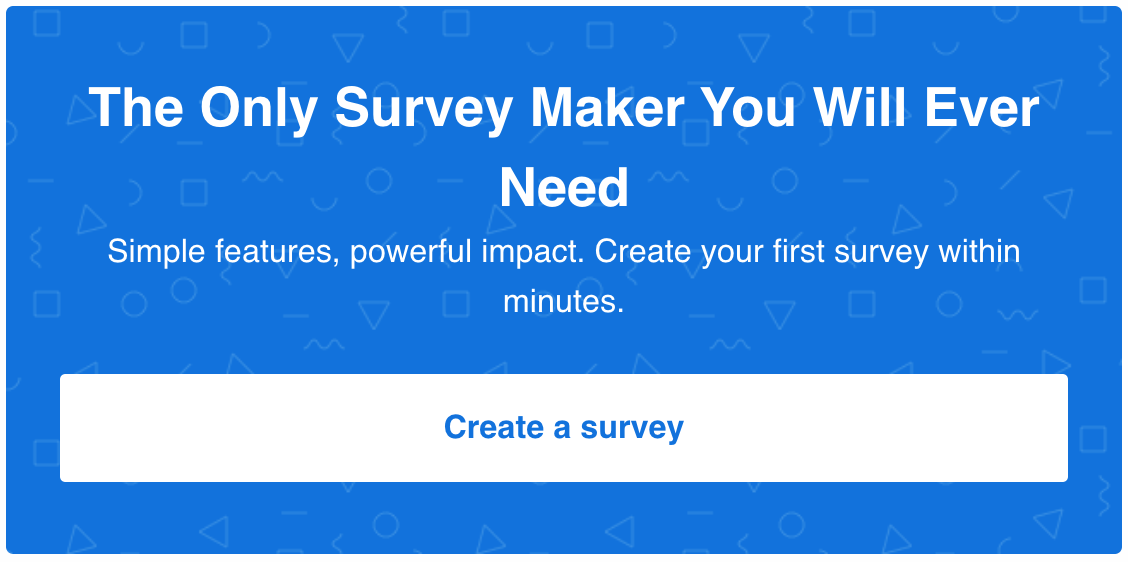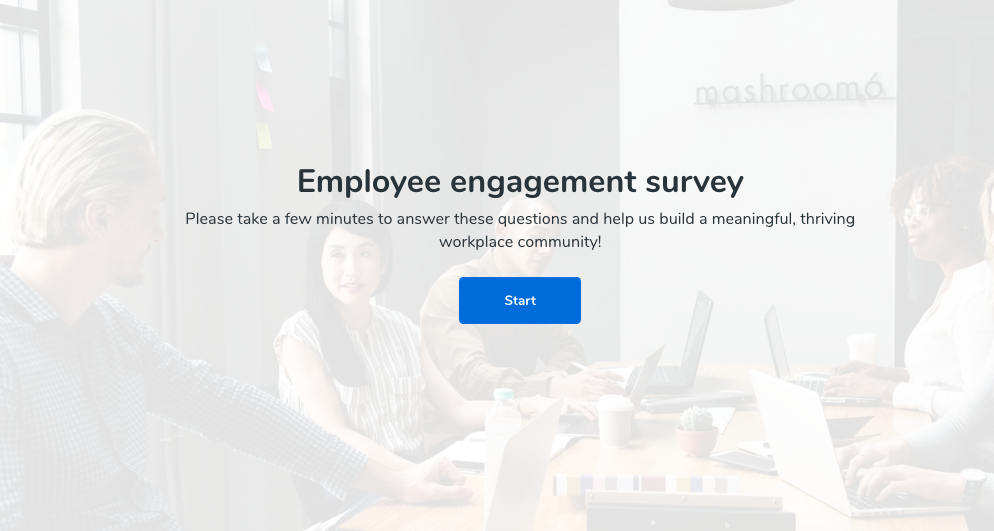Employee engagement refers to passion, commitment, and effort an employee puts into their work. This is a very important component of the employee’s experience. However, it is often overlooked and mashed into with other considerations such as overall employee satisfaction.
Here you can find a template for an employee engagement survey. You can use it as it is, or edit it to fit your specific needs and concerns.
*To access the template, just create an account (or login), and then select a survey template from our builder. It’s available to users on a free trial too!
Based on the dynamic of your work organization, the frequency of these surveys can vary. It is recommended that you run it once a year, although some businesses use them even more often, bi-annually or quarterly.
How is employee engagement measured?
An employee engagement survey should be differentiated from regular employee satisfaction surveys. While employee engagement may factor in job satisfaction, it is a goal in its own right. When you measure satisfaction, you are focused on the employees and their overall experience in your organization. When you measure engagement, the focus shifts to the work itself and its place in employees’ motivation.
According to researchers, employee engagement refers to:
- Highly energized and resilient work performance
- Persistence and willingness to invest effort
- Feelings of significance, enthusiasm, passion, inspiration, pride, excitement, and challenge from the work
- Full focus and immersion in the work process
A passionate, dedicated employee is one of the prerequisites for organizational success, therefore it is a good idea to run employee engagement surveys separately from questionnaires about workplace satisfaction.
Why should I run an employee engagement survey?
Is there is a crisis in employee engagement? While Aon research findings report that employee engagement is at an all-time high with 65%, other research is not so optimistic.
According to a Gallup global poll, only 15% of employees worldwide are engaged in their jobs. Moreover, CBI reports that only 12% of businesses are happy with current levels of employee engagement.
Of course, each business is an individual story, but there is a clear incentive in measuring and maintaining employee engagement no matter how you feel about the current state of things.
- 58% of the North American employers are looking to create a brand strategy that enhances employee engagement and improves the employee experience
- Companies with a high employee engagement level have significantly higher productivity, profitability, and customer ratings, reduced absenteeism, and fewer safety incidents
- Employee engagement and retention rates are around 30-50% higher for businesses who prioritize a strong learning culture
Meaning, if you want to ensure the success of your organization, employee engagement surveys and appropriate feedback should be the staple of your HR strategy.
How can I affect employee engagement?
According to the Talent Map, there are 12 employee engagement factors that are within management’s influence.
- Leadership: listening to employees and taking timely action based on their feedback
- Mission, vision, and values: providing employees with a clear picture of your organization’s goals and purpose.
- Personal development: allowing to learn and develop in the workplace.
- Self-management: giving employees an adequate level of autonomy in their daily work and projects.
- Accolades: praises and rewards are just as important as constructive criticism
- Supervisory management: a positive, trusting relationship with supervisors and mid-level managers
- Communication: keeping employees informed about things relevant to their job and organization
- Teamwork: encouraging team collaboration with respect to each individual’s unique set of skills and temper
- Environment: relaxed and friendly atmosphere
- Receptiveness: being receptive to the employee’s ideas and opinions
- Accepting the Whole Person: having understand for employee’s personal needs and concerns
- Feedback: watching over employees’ work and development and providing both praise and constructive criticism.
Based on these 12 employee engagement factors, you can measure how good your organization is doing.
Questions for an Employee Engagement Survey
An employee engagement survey can have between 10 and 50 questions, depending on the specifics of your organization. We recommend that you keep it short and sweet by focusing on the factors in the previous section.
DecisionWise recommends that you come up with three anchor questions that will measure: the level of energy employees get from their job, how involved they feel, and how committed they are. Put into action, these questions can be:
- Is your job stimulating and energizing?
- Is it easy to become absorbed in your job?
- Would you remain with this organization if a job with a similar salary and benefits were available elsewhere?
Our survey also includes these questions.
- Do you look forward to coming to work?
- Does your job provide you with a sense of meaning and purpose?
- Do you have the freedom to choose how to best perform your job?
- Do you feel challenged in a way that results in personal growth?
- Do you see positive results because of your work?
- Do you feel like you belong here?
- Would you recommend the organization as a great place to work?
- What are the greatest strengths of our organization?
- What are the weaknesses of our organization?
This employee engagement survey is a basic template that will give you the core information you need. After the first round of feedback, we suggest you add more questions, focusing on weak points identified in the previous survey.
Out of 12 questions, 10 are closed-ended, while the last two are open-ended, giving you an opportunity to gather qualitative feedback. We used a Likert scale for responses in this survey, showing 5 degrees of agreement or attitude.
Results
Once you run an employee engagement survey, it is important to properly interpret results. DecisionWise points out two mistakes that organizations often make.
One is relying on the overall score you got by calculating the average value of all questions. However, this result would lead you on the wrong path.
The other is relying on the score stemming from only one question focusing on measuring employee engagement. Yet, one question does not offer enough insight and it can often be vague.
The best way to measure employee engagement is to focus on the answers from the main three questions. But this survey is not all about coming up with a single number. Its purpose is to see both details and the big picture and identify the weak points in your organization. The best way to do that is to treat the result as a source of direct feedback.
Conclusion
If you want to start measuring employee engagement, all you need to do is sign up here. You can use this template, customize it, or create an entirely new survey.
For 14 days, you make as many as you’d like for free! LeadQuizzes enables you to make fully customized surveys, forms, and quizzes you can use to organize your workplace and improve employee satisfaction. Give it a shot!

